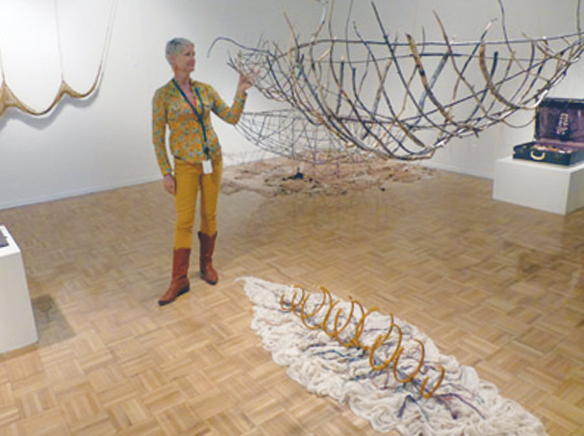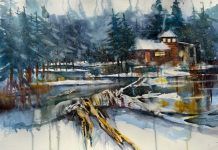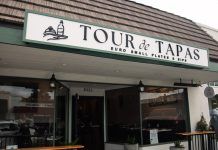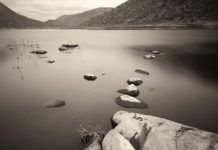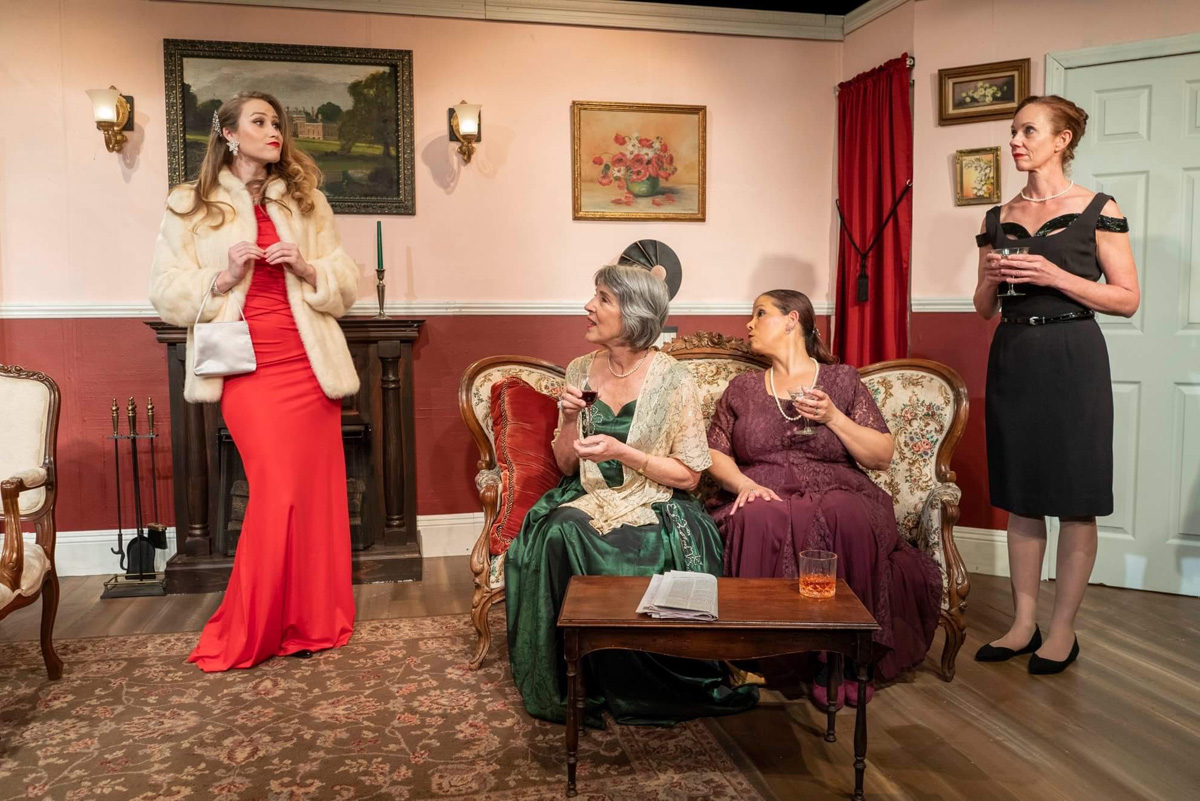The work of Stephanie Bedwell does what art should do—engages one with wonder.
On Tuesday, August 27th, “From This Place” opened at the Hyde Gallery at Grossmont College. Spectators included artists, students, professors and those who came to simply appreciate her work did not have to wonder about her inspiration or her story. Bedwell, a self-described introvert, smoothly interacted with the crowd as they stopped to contemplate at her sculptures.
The work of Stephanie Bedwell does what art should do—engages one with wonder.
On Tuesday, August 27th, “From This Place” opened at the Hyde Gallery at Grossmont College. Spectators included artists, students, professors and those who came to simply appreciate her work did not have to wonder about her inspiration or her story. Bedwell, a self-described introvert, smoothly interacted with the crowd as they stopped to contemplate at her sculptures.
Bedwell teaches three units at Grossmont College but has taught art at Mt. Helix Academy for nineteen years.
“I have some students from Mt. Helix who take my course at Grossmont now,” she said. Acknowledging her age at 51 she has been an artist since 19, which is not a fact she laments.
She is happy to be alive.
Bedwell was diagnosed with breast cancer in December 2011.
“It was shocking to me. I looked healthy, I looked like I was a candidate for good health,” she said, standing in front of her many works of art, all metaphorical by evocative use of materials and subject.
Many of her pieces are vessels, pieces that resemble the endoskeletons of boats, woven with yarn so ethereal looking it could be mistaken for spun silk. Inside “Turmeric Hammock” are insects created with Apoxie (Bedwell is emphatic about using non-toxic materials) and painted, placed near a dead bee.
“The boats came first but the bees are new,” she said, “the dead bee is a symptom of the same thing,” which, she said, is a bigger picture of how we are taking care of ourselves (or not taking care of ourselves) which leads to what Bedwell refers to as a “colony collapse.”
Colony as the body, colony as mankind, colony as the planet—as many eyes see the work are as many interpretations that can be made of such symbols. Turmeric, which Bedwell drinks in tea daily, is used to dye the fibers of the hammock.
“It [turmeric] makes a beautiful dye and I love that it’s a cancer fighter,” she said.
She has taken a progressive approach to fighting the cancer with nutrition and exercise.
Bedwell also incorporates stress-reduction as part of her recovery, crediting the creative process in particular.
“This is how I meditate,” she said as she held her hands in the direction of her sculptures, nodding her head as she spoke to the inquisitive, the bright gallery lights directed at the art that is the result of the change in herself and her life. “I respond to work that comes from an authentic place of pain, from soul as opposed to aesthetics.”
“Fear” is a sculpture that uses dolphin bones she found on the beaches of Ventura, which she used because it reveals the juxtaposition of life and death. “It’s beautiful and scary, life and our vulnerability, how do we navigate that?” With a piece of wood in the middle, “Fear” resembles a spine. On the ends of the bones are little hooks that could be missed without looking closely. “Fear is what is scary, not the thing you’re afraid of. Fear hooks you,” she said.
Repurposing animal bones evokes death in “Fear” for this piece, but such fragility is evident in all of her pieces. “Packed In” is a work representative of the womb. A small, sculpted, and painted womb placed on strands of delicate fabric, inside of a satchel type case.
She creates much of her art with no special materials in particular. “Lost” showcases shale from the White Mountains, with more of her Apoxie insects on top of the rock. She described the origin of the piece to a group of students with sketchbooks and notebooks; a friend made her go hiking, which she admits, “can be boring, so I look for stuff.” Similar to the dolphin bones, the inherent artist within sees things discarded or in organic form, and is moved to create something with them.
“A new body of work came out of this,” she said about cancer, about times she could not work with her hands, about times she could not take care of her family, about the evolution of her work through survival. “When something happens I try to order that experience, I can be a victim or decide to glean from experience what I can, to evolve.”
The art is on display through Sept. 12 at the Hyde Gallery, Grossmont College, 8800 Grossmont College Drive, El Cajon, California, 92020.
Gallery hours are Monday through Thursday, 10:00 a.m. – 6:00 p.m. Friday, Saturday, Sunday and legal holidays are closed.


